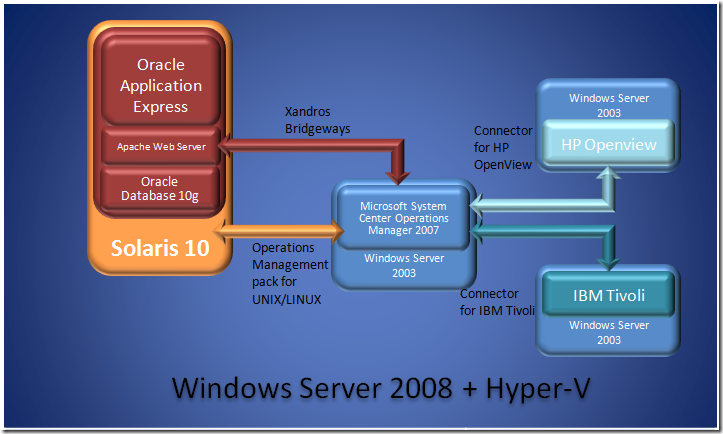Microsoft working with Xandros responding to feedback from IEC council member NATO
I’m Claudio Caldato, Senior Program Manager in the Interoperability Technical Strategy team here at Microsoft. I’m going to talk about the work Microsoft did with Xandros in response to feedback from Interoperability Executive Customer Council (IEC) member NATO gave us, asking for heterogeneous system management scenarios.
One of my key activities is to follow up on feedback provided by the Interoperability Executive Customer Council. Recently a few members of the council, and in particular NATO, raised the issue of the complexity in managing multiple heterogeneous systems across a large distributed network environment from a single point of access and the need to aggregate status information and alerts to other management applications. This is quite a broad topic, in retrospect!
To narrow down the scope we worked with NATO to define a specific scenario and this scenario formed the basis of the “Multi-Platform System Management” lab. The lab comprised the following Applications and Services
· Microsoft System Center Operations Manager 2007
- HP OpenView
- IBM Tivoli
- Xandros Bridgeways
- Oracle Database 10g
- Oracle Application Express
- Apache Web Server with PHP
Because of the heterogeneous nature of the components, we choose to work under the Interop Vendor Alliance (IVA) with Xandros (a fellow IVA member) to create the following architecture:
The goal for the lab was to demonstrate the following functionality:
- Use Microsoft System Center Operations Manager to monitor performance and availability of Microsoft and non-Microsoft platforms and applications such as: Windows Server 2003, Sun Solaris 10, Oracle Database, Oracle Application Express, Apache Web Server
- Use Microsoft System Center Operations Manager to report performance and availability data to the IBM Tivoli and HP OpenView management consoles
- Improve the monitoring of SLA’s by providing a single point of access for Hardware, OS, and application level monitoring, System troubleshooting, Failure analysis, Disc, Network, Memory, and CPU Metrics, and Application status and availability
We were able to build the lab and, in so doing, are able to demonstrate to others how to solve the interoperability challenges that this sort of environment creates. One of these challenges was how to enable the System Center Operations Manager to manage applications running on Sun Solaris machines. The solution to this challenge came from Xandros in the form of the Xandros Bridgways Management Packs. This management pack is engineered to extend the capabilities of the System Center Operations Manager to applications of both Windows and non-Microsoft platforms, providing us with an ideal solution to the problem at hand.
From a technical perspective, the lab included several other very interesting aspects that I encourage you to discover for yourself. These have been documented in the white paper that’s available on the IVA website under the Multi-Platform System Management Lab. The good news is that we were able to successfully address the specific needs expressed by the IEC Council’s feedback. I find it personally rewarding that we’re able to meet the expectations of our customers… particularly, IEC Council member NATO who commented on the outcome of this lab (quote extracted from the white paper):
“NATO employs a diverse set of hardware and software and has to work with vendors that are committed to work on interoperability, said Detlef Janezic, NATO CIS Services Agency (NCSA) when participating in the Interoperability Executive Council sessions in 2008. NCSA mentioned on behalf of NATO some of the interoperability challenges experienced between Microsoft System Center and HP OpenView product lines. Based on these concerns, Microsoft engaged in an initiative geared to resolve the stated interoperability challenges. This solution was presented to NATO on 24 Mar 2009. The initial assessment of NCSA and the NATO C3 Agency (NC3A) on the chosen approach and its implementation is that the presented solution shows great potential. The two NATO agencies very much appreciate these Microsoft efforts and intend to implement & test the provided solution in its IT environment as soon as possible.”
The Interoperability discussion related to system management does not end here. We continue to work with partners like Xandros, whom I’d like to thank for their help and contribution on setting this interoperability lab up.
Claudio Caldato, Senior Program Manager
